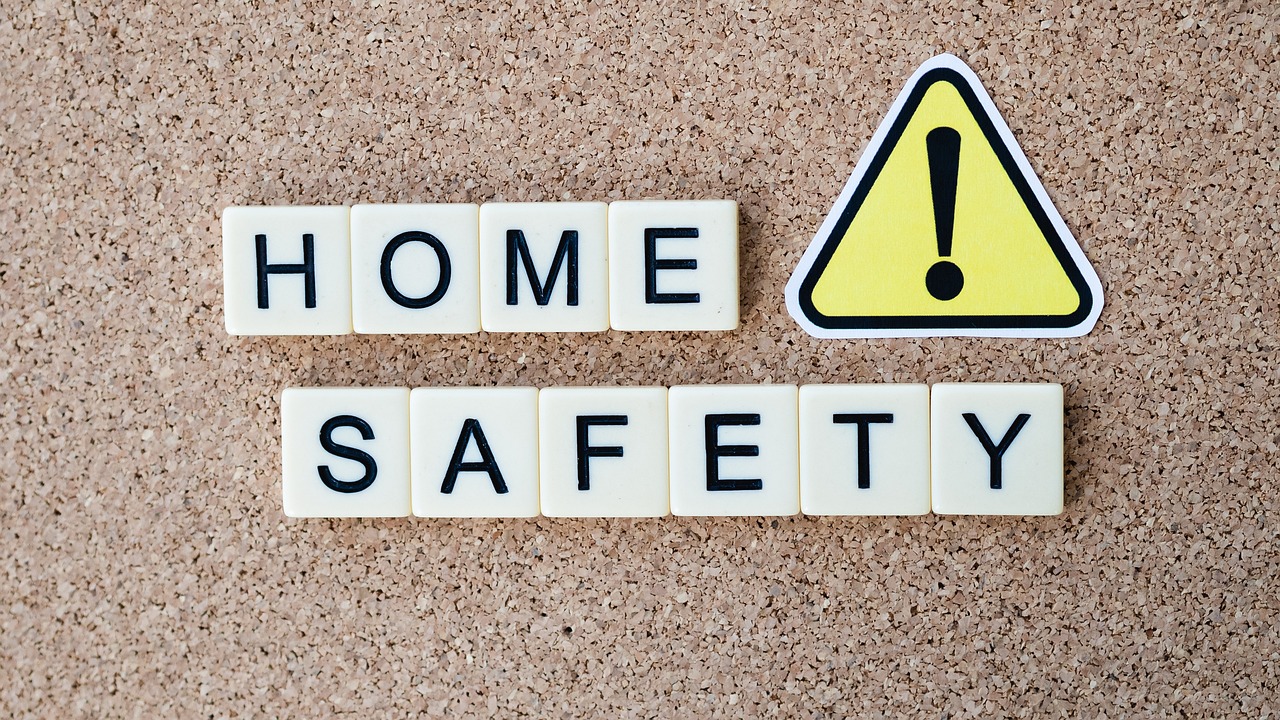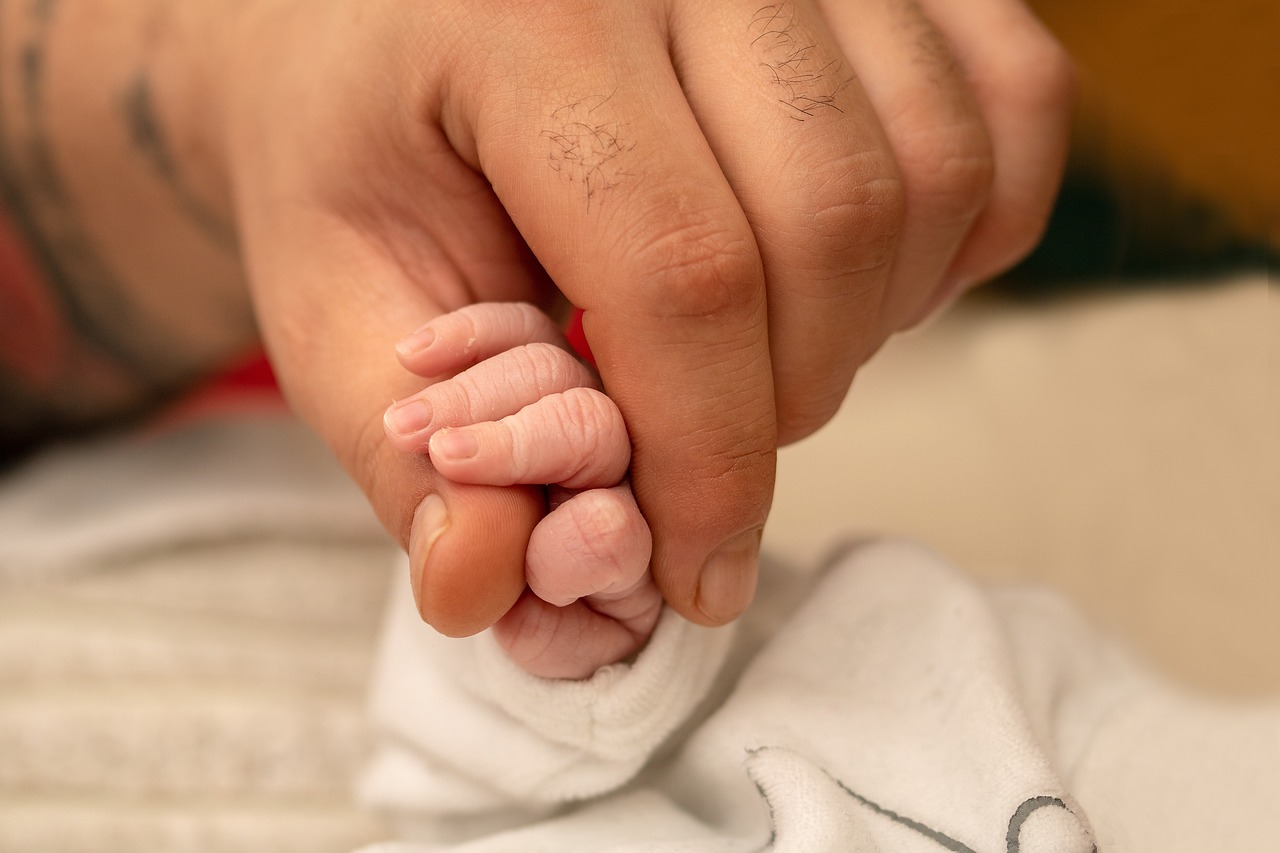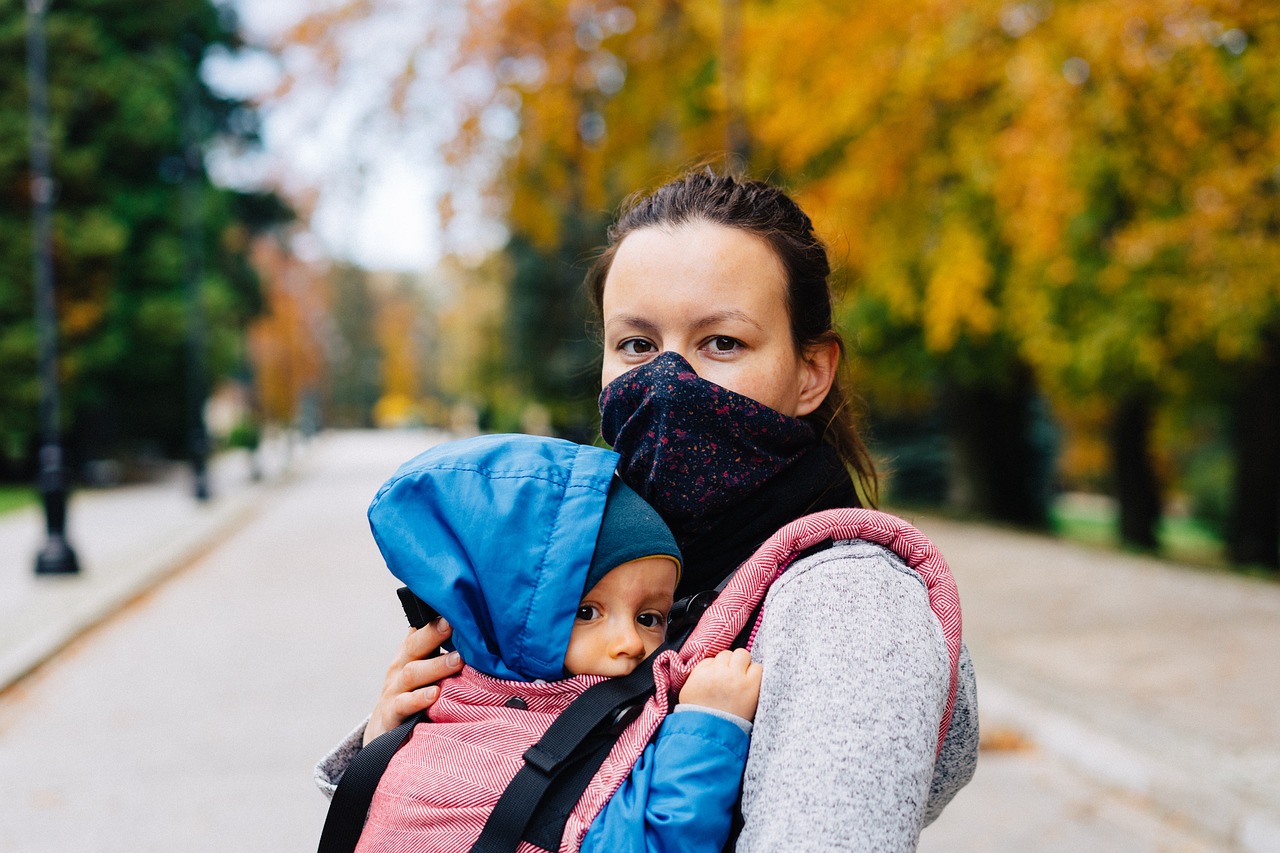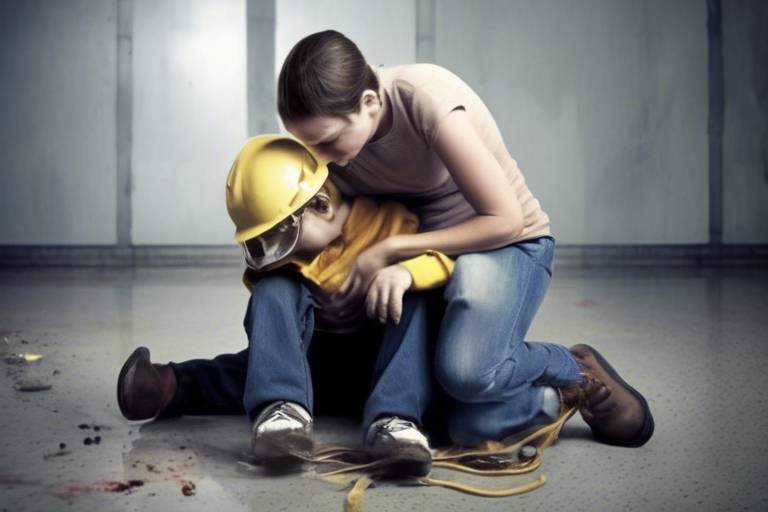Physical Safety Vs Emotional Safety
In our ever-evolving world, the concepts of physical safety and emotional safety have become increasingly significant. While they may seem like two separate realms, they are deeply intertwined, each influencing our overall well-being in profound ways. Imagine walking into a room where you feel completely at ease. You know that the environment is safe from physical threats – no sharp objects, no hazards lurking in the corners. But what if that same room is filled with judgmental glances and unspoken criticisms? Suddenly, the feeling of safety dissipates, and you're left vulnerable, despite the absence of physical threats. This scenario highlights the importance of understanding both types of safety and their unique roles in our lives.
Physical safety is often the first thing that comes to mind when we think about safety measures. It encompasses the protective measures we take to shield ourselves from harm or danger. Whether it’s installing smoke detectors at home, adhering to safety protocols at work, or following traffic rules on the road, physical safety is about minimizing risks and ensuring our bodies are protected. However, it’s essential to recognize that physical safety alone does not guarantee a sense of security. For instance, consider a workplace that has robust safety protocols in place, yet employees feel uncomfortable expressing their opinions for fear of being ridiculed. This is where emotional safety steps in.
Emotional safety, on the other hand, deals with our psychological well-being. It allows individuals to express their thoughts and feelings without fear of judgment or backlash. Think of it as the invisible shield that protects our mental health. When we feel emotionally safe, we can share our vulnerabilities, take risks, and engage in open communication. This sense of safety is crucial in personal relationships, workplaces, and community settings. Just like a sturdy building needs a solid foundation to stand tall, our emotional safety provides the groundwork for healthy interactions and relationships.
The intersection of physical and emotional safety is where the magic happens. When both are present, individuals can thrive. For example, in a nurturing home environment where physical safety is ensured, children can explore their emotions and develop resilience. Conversely, in a workplace that prioritizes emotional safety, employees are more likely to report hazards or unsafe conditions without fear of retribution. It’s a beautiful cycle where one type of safety reinforces the other, creating a holistic approach to well-being.
In conclusion, while physical safety protects us from tangible threats, emotional safety nurtures our inner selves. Recognizing the importance of both can lead to healthier relationships, improved mental health, and more secure environments. So, as we navigate through life, let’s strive to create spaces that honor both our physical and emotional needs. After all, true safety is about feeling secure in every sense of the word.
- What is the difference between physical and emotional safety?
Physical safety involves protection from harm or danger, while emotional safety pertains to the psychological well-being of individuals, allowing for open expression without fear of judgment.
- How can I create a physically safe environment?
Ensure that your surroundings are free from hazards, implement safety protocols, and regularly assess risks to maintain a secure space.
- What are some ways to foster emotional safety in relationships?
Building trust, encouraging open communication, and practicing empathy are key strategies to create a safe emotional environment.
- Can trauma affect both types of safety?
Yes, trauma can significantly impact an individual's perception of both physical and emotional safety, leading to heightened anxiety and fear.

Understanding Physical Safety
Physical safety is a fundamental aspect of our daily lives, often taken for granted until we face a situation that threatens it. It encompasses the measures and protocols put in place to protect individuals from harm, injury, or danger in their environments. Imagine walking into your home after a long day, feeling secure and at ease. That sense of safety is not merely a byproduct of luck; it’s the result of intentional actions and systems designed to ensure your well-being.
In various settings—be it at home, in the workplace, or within the community—physical safety is influenced by numerous factors. These factors can range from the structural integrity of buildings to the presence of safety protocols and emergency response plans. For example, consider a workplace that prioritizes safety: it might feature well-lit hallways, clear exit signs, and regular safety drills. Each of these elements contributes to a culture of safety, where individuals feel protected and valued.
Moreover, physical safety is not just about avoiding accidents; it’s also about fostering an environment where individuals can thrive without fear. A safe physical space allows for greater focus, productivity, and overall happiness. According to studies, when people feel safe in their surroundings, they are more likely to engage positively with others and contribute to a harmonious community. This creates a ripple effect, enhancing the quality of life for everyone involved.
However, achieving physical safety is not a one-size-fits-all solution. It requires a tailored approach that considers the unique needs of each environment. For instance, a school may implement different safety measures compared to a corporate office. Here are some key components that play a critical role in establishing physical safety:
- Environmental Design: This includes the layout of spaces, lighting, and accessibility features that deter potential hazards.
- Emergency Preparedness: Having clear plans and resources available for emergencies, such as fire drills or first aid kits, is crucial.
- Training and Awareness: Regular training sessions can empower individuals to recognize and respond to safety threats effectively.
In conclusion, understanding physical safety is essential for creating environments where individuals can feel secure and empowered. It’s not just about the absence of danger but about the presence of proactive measures that promote well-being. As we delve deeper into the intersections of physical and emotional safety, it becomes clear that both are intertwined, playing a significant role in our overall quality of life.

Defining Emotional Safety
Emotional safety is a fundamental aspect of our psychological well-being, allowing individuals to express their thoughts, feelings, and vulnerabilities without the fear of being judged or ridiculed. Imagine a cozy blanket on a cold day; that’s what emotional safety feels like—it wraps you in comfort and warmth, providing a refuge from the harshness of the outside world. It’s not just about feeling good; it’s about creating an environment where people can thrive and grow without the weight of anxiety or fear holding them back.
At its core, emotional safety is built on several key components, which include:
- Trust: This is the bedrock of emotional safety. When you trust someone, you feel secure in sharing your innermost thoughts and feelings.
- Respect: A respectful environment acknowledges individual differences and values each person's voice.
- Support: Emotional safety thrives when individuals feel supported by those around them, knowing they can rely on others in times of need.
These components interact in a delicate dance, influencing how we relate to one another in personal relationships, workplaces, and communities. For instance, in a workplace setting, an employee who feels emotionally safe is more likely to share innovative ideas, take risks, and collaborate effectively with colleagues. On the contrary, a lack of emotional safety can lead to disengagement, stress, and even burnout.
Moreover, the importance of emotional safety cannot be overstated, especially in today’s fast-paced world where mental health is becoming increasingly paramount. When individuals feel emotionally safe, they are more likely to engage in open communication, express their needs, and foster deeper connections with others. It’s like planting a garden; when you provide the right conditions—nurturing soil, adequate sunlight, and water—your plants flourish. Similarly, when emotional safety is prioritized, relationships blossom.
In summary, defining emotional safety goes beyond mere comfort; it encompasses a robust framework that supports healthy interactions and promotes well-being. By understanding its components and significance, we can work towards creating environments—whether at home, in schools, or at work—that prioritize emotional safety, ultimately leading to happier and more productive lives.

The Importance of Trust
Trust is the invisible thread that weaves through the fabric of our relationships, binding us together in a way that fosters understanding and support. When we talk about emotional safety, trust becomes a foundational element that allows individuals to express their thoughts and feelings without the fear of judgment or retribution. Imagine a sturdy bridge; without trust, that bridge is wobbly and uncertain, making it difficult for individuals to traverse the emotional landscape of their relationships. In a world where vulnerability is often seen as a weakness, trust transforms it into a strength, creating a haven where people can truly be themselves.
Building trust is not a one-time event; it’s an ongoing process that requires patience, consistency, and, most importantly, communication. When individuals feel trusted, they are more likely to open up and share their vulnerabilities. This openness not only deepens the connection between individuals but also enhances their overall emotional safety. It’s like planting a garden; with care and attention, trust can blossom into beautiful relationships, but neglect can lead to weeds of misunderstanding and resentment.
Moreover, trust plays a pivotal role in various environments—from homes to workplaces. In a family setting, trust fosters a sense of security where every member feels valued and heard. In the workplace, trust can lead to increased collaboration and innovation, as employees feel safe to share ideas without fear of dismissal. According to a study by the Harvard Business Review, organizations that prioritize trust see a significant boost in employee engagement and productivity. This shows that trust isn’t just a feel-good concept; it translates into tangible benefits.
However, building trust is not without its challenges. Past experiences, particularly those involving trauma, can create barriers that make it difficult for individuals to trust again. It’s essential to acknowledge these hurdles and work through them in a supportive environment. Trust-building activities can serve as stepping stones in this journey, allowing individuals to gradually lower their defenses and embrace vulnerability. These activities can range from simple conversations to team-building exercises that encourage collaboration and openness.
In conclusion, trust is not merely a component of emotional safety; it is the cornerstone upon which safe and healthy relationships are built. By nurturing trust, we create spaces where individuals can thrive emotionally, fostering a culture of openness and acceptance. As we continue to explore the intersections of physical and emotional safety, let’s remember that trust is the key that unlocks the door to deeper connections and a more fulfilling life.

Building Trust in Relationships
Building trust in relationships is akin to nurturing a delicate plant; it requires time, patience, and the right conditions to flourish. Trust acts as the foundation upon which all healthy relationships are built, whether they are personal or professional. When trust is established, individuals feel safe to express their thoughts and feelings openly, creating an environment rich in understanding and support. But how do we cultivate this essential element of connection?
First and foremost, transparency plays a crucial role in trust-building. When you are open about your intentions, feelings, and actions, it reduces the chances of misunderstandings that can erode trust. Imagine trying to navigate a foggy road; without clarity, you risk veering off course. Similarly, transparency illuminates the path in relationships, allowing both parties to move forward confidently.
Another vital aspect is consistency. Trust is not built overnight; it is a gradual process that requires reliable behavior over time. When you consistently follow through on your promises and commitments, you reinforce the belief that you can be counted on. Think of it like a bank account: every positive action deposits trust, while negative actions can lead to withdrawals. Over time, it’s the balance of these deposits and withdrawals that determines the overall trustworthiness of the relationship.
Moreover, vulnerability is often overlooked but is a powerful tool in building trust. Sharing your fears, insecurities, and even your mistakes can create a deeper connection. It’s like peeling back the layers of an onion; the more you reveal, the more authentic the relationship becomes. However, vulnerability does come with risks, and it’s essential to ensure that the other party is equally committed to fostering a safe space for such openness.
To further enhance trust, consider engaging in activities that promote bonding and understanding. These can include:
- Regular check-ins to discuss feelings and perspectives
- Team-building exercises in a work setting
- Shared hobbies or interests that allow for quality time together
Ultimately, building trust is a continuous journey rather than a destination. It requires ongoing effort and a mutual commitment to maintaining an environment where both parties feel safe and valued. By focusing on transparency, consistency, and vulnerability, you can create a robust framework that supports lasting trust in your relationships.
Q: How long does it take to build trust in a relationship?
A: The time it takes to build trust varies based on individual experiences and the nature of the relationship. Patience and consistent positive interactions are key.
Q: What should I do if trust has been broken?
A: Rebuilding trust requires acknowledgment of the breach, open communication about feelings, and a commitment to change. It may take time, but with effort, it can be restored.
Q: Can trust be rebuilt after a major betrayal?
A: Yes, while it is challenging, trust can often be rebuilt through sincere apologies, transparency, and consistent actions over time. Both parties must be willing to work towards healing.

Trust-Building Activities
Building trust in any relationship, whether personal or professional, is akin to nurturing a delicate plant. It requires care, patience, and the right conditions to thrive. One of the most effective ways to cultivate trust is through engaging activities that foster connection and understanding. These activities can be simple yet profound, often leading to deeper conversations and stronger bonds. Think of these trust-building exercises as the water and sunlight that help your relationship grow.
For instance, consider participating in team-building exercises that require collaboration. When individuals work together towards a common goal, they learn to rely on one another, which is fundamental in establishing trust. Activities like problem-solving challenges or escape room experiences can serve as excellent platforms for this purpose. They not only encourage teamwork but also allow individuals to showcase their strengths and vulnerabilities in a safe environment.
Another effective method is to engage in regular check-ins with each other. This could be as simple as setting aside time each week to discuss feelings, concerns, and accomplishments. These check-ins create an atmosphere of openness, where people feel valued and heard. It’s like having a designated time to water that plant, ensuring it gets the nutrients it needs to flourish.
Additionally, sharing personal stories can significantly enhance trust. When individuals open up about their experiences, it creates a sense of vulnerability that invites others to do the same. This mutual sharing can lead to empathy and understanding, which are crucial components of trust. Think of it as planting seeds of connection that will eventually grow into a sturdy tree of trust.
Here are some engaging trust-building activities that can be implemented:
- Trust Falls: This classic exercise encourages individuals to rely on each other physically, enhancing the sense of safety and support.
- Group Discussions: Facilitated discussions on topics that matter to the group can help individuals express their thoughts and feelings openly.
- Volunteer Together: Engaging in community service as a team fosters a shared sense of purpose and strengthens bonds.
- Feedback Sessions: Regularly providing and receiving constructive feedback helps individuals understand each other’s perspectives better.
Incorporating these activities into your routine can significantly enhance the trust levels in your relationships. Remember, trust is not built overnight; it’s a gradual process that requires consistent effort and engagement. Just like any healthy relationship, it thrives on communication, vulnerability, and shared experiences. So, roll up your sleeves and start planting those seeds of trust today!
Q1: Why is trust important in relationships?
A1: Trust is essential because it creates a safe environment for individuals to express themselves without fear of judgment. It fosters open communication and strengthens the bond between people.
Q2: How can I tell if trust is lacking in a relationship?
A2: Signs of lacking trust can include constant suspicion, reluctance to share personal thoughts, and a feeling of discomfort during conversations. If communication feels strained, it may indicate a need to rebuild trust.
Q3: Can trust be rebuilt once it's broken?
A3: Yes, while rebuilding trust can be challenging, it is possible through consistent actions, open communication, and a willingness to be vulnerable. It requires time and effort from all parties involved.
Q4: What are some quick activities to build trust in a team?
A4: Quick activities include icebreaker games, sharing personal anecdotes, and engaging in collaborative projects that require teamwork and communication.

Impact of Trauma on Safety
Trauma can cast a long shadow over both physical and emotional safety, often intertwining the two in complex ways. Imagine walking through a dark alley after experiencing a mugging—your body instinctively tenses, your heart races, and your mind races through a whirlwind of thoughts. This is a prime example of how trauma can distort our perception of safety. It’s not just about the physical danger that lurks in the environment; it’s also about the emotional scars that can make us feel vulnerable and unsafe even in familiar settings.
When discussing the impact of trauma, it’s important to recognize that it can stem from various sources, including personal experiences, societal issues, or even global events. For instance, individuals who have faced domestic violence may find it challenging to feel secure in their own homes, while those who have experienced bullying at school may carry that fear into their workplaces. The lingering effects of trauma can lead to heightened anxiety, distrust, and a pervasive sense of insecurity, which can manifest in both physical and emotional domains.
Moreover, trauma can create a cycle of fear that affects not only the individual but also their relationships with others. When someone feels unsafe, they might withdraw from social interactions, leading to isolation. This isolation can exacerbate feelings of emotional unavailability, making it difficult for them to build or maintain trust with others. For example, a person who has experienced trauma might struggle to open up during a conversation, fearing judgment or misunderstanding. This emotional barrier can hinder the development of supportive relationships, ultimately affecting their overall well-being.
To illustrate the impact of trauma on safety, consider the following table that outlines different types of trauma and their potential effects on safety perceptions:
| Type of Trauma | Potential Effects on Physical Safety | Potential Effects on Emotional Safety |
|---|---|---|
| Domestic Violence | Fear of physical harm, hyper-vigilance | Difficulty trusting partners, fear of intimacy |
| Bullying | Avoidance of certain places, social withdrawal | Low self-esteem, anxiety in social situations |
| Natural Disasters | Fear of recurrence, avoidance of certain areas | Post-traumatic stress, difficulty forming new relationships |
Understanding the intricate relationship between trauma and safety is crucial for creating supportive environments. By acknowledging the effects of trauma, we can better empathize with those who struggle to feel safe, both physically and emotionally. This understanding can lead to more effective strategies for healing and support, whether in personal relationships, workplaces, or community settings.
As we move forward, it's vital to recognize that addressing trauma is not just about ensuring physical safety; it's equally about fostering an emotionally safe environment where individuals can express their feelings without fear. This dual approach can significantly enhance the quality of life for those affected by trauma, allowing them to reclaim their sense of safety and well-being.
- What is the difference between physical safety and emotional safety?
Physical safety involves protection from harm or danger, while emotional safety refers to the ability to express oneself without fear of judgment. - How can trauma affect my daily life?
Trauma can lead to heightened anxiety, distrust, and feelings of insecurity, impacting both personal relationships and overall well-being. - What can I do to create a safe environment for someone who has experienced trauma?
Listen actively, provide emotional support, and ensure open communication to foster trust and safety.

Balancing Both Types of Safety
Achieving a balance between physical safety and emotional safety is not just a goal; it's a necessity for overall well-being. Think about it: when you walk into your home, do you feel secure both in terms of your physical surroundings and your emotional state? It's essential to create an environment where you can let your guard down without fear of harm or judgment. This balance is crucial in various settings, including homes, workplaces, and communities, where the interplay between these two types of safety can significantly influence our daily lives.
To truly understand how to harmonize these aspects, we need to consider the dynamics of our interactions. For instance, in a workplace, employees who feel physically safe—free from hazards and threats—are more likely to engage fully. However, if they do not feel emotionally safe, perhaps due to a lack of support or fear of criticism, their productivity and morale can plummet. Thus, physical safety without emotional safety is like having a sturdy umbrella that has holes in it; it may protect you from rain, but you’ll still get wet.
Creating a balance involves proactive measures. Here are some strategies:
- Open Communication: Establish channels where individuals can express concerns about both physical and emotional safety without fear of reprisal.
- Regular Assessments: Conduct routine evaluations of safety protocols and emotional well-being to identify areas needing improvement.
- Training Programs: Implement training that focuses on recognizing signs of distress and understanding the importance of both types of safety.
Another critical aspect of balancing safety is fostering a culture of inclusivity. When individuals feel included and valued, it enhances their emotional safety, which in turn contributes to their physical safety. Imagine a community where everyone feels like they belong; the sense of unity fosters vigilance and care for one another, creating a protective layer that enhances both physical and emotional safety.
Moreover, we must recognize that the needs for physical and emotional safety can change over time. For example, after a traumatic event, individuals may require additional emotional support to feel safe again, even if their physical environment remains unchanged. Therefore, it's vital to remain adaptable and responsive to the evolving needs of those around us.
In summary, balancing physical and emotional safety is not a one-time effort but rather an ongoing journey. By cultivating environments that prioritize both aspects, we can create spaces where everyone feels secure and valued. After all, when we feel safe—both physically and emotionally—we can thrive, not just survive.
- What is the difference between physical safety and emotional safety?
Physical safety refers to the protection from harm or danger, while emotional safety involves the ability to express oneself without fear of judgment. - How can I ensure emotional safety in my workplace?
Encourage open communication, provide support resources, and foster a culture of respect and inclusivity. - Why is balancing both types of safety important?
Balancing both types of safety ensures overall well-being and enhances productivity, satisfaction, and community cohesion.

Creating Safe Spaces
Creating safe spaces is not just a trend; it's a necessity in our increasingly complex world. Whether it's at home, in the workplace, or within our communities, the concept of a safe space revolves around fostering an environment where individuals feel both physically secure and emotionally supported. Imagine walking into a room where you can express your thoughts without the fear of being judged; that’s the essence of a safe space. It’s about cultivating a culture of acceptance and understanding, where everyone feels valued and heard.
To create such spaces, we need to consider various elements that contribute to both physical and emotional safety. For instance, a well-lit, organized area can enhance physical safety by reducing hazards, while open communication channels can significantly improve emotional safety. Here are a few key components to consider:
- Inclusivity: Ensure that everyone feels welcome and included, regardless of their background or beliefs. This can be achieved by actively promoting diversity and encouraging participation from all members.
- Open Communication: Foster an environment where individuals can share their thoughts and feelings without fear. Regular check-ins and feedback sessions can help maintain this open dialogue.
- Physical Comfort: The physical layout of a space can greatly influence how safe individuals feel. Comfortable seating, adequate lighting, and clear pathways can contribute to a more inviting atmosphere.
Additionally, establishing clear guidelines for behavior can help maintain the integrity of the safe space. For example, implementing a no-tolerance policy for harassment or discrimination sends a strong message that everyone’s safety is a priority. It's crucial that all members understand these guidelines and the importance of adhering to them.
Moreover, creating safe spaces isn't just about the physical environment; it's also about the emotional connections we build. Engaging in team-building activities, encouraging vulnerability, and showing empathy are all ways to strengthen the bonds within a group. When individuals feel they can trust one another, they are more likely to express themselves freely, leading to a richer, more collaborative atmosphere.
In conclusion, safe spaces are vital for nurturing both physical and emotional well-being. By focusing on inclusivity, open communication, and physical comfort, we can create environments where individuals feel secure and empowered. Remember, a safe space is not just a location; it's a mindset that prioritizes the well-being of everyone involved.
Q: What is a safe space?
A: A safe space is an environment where individuals feel secure enough to express themselves without fear of judgment or harm. It encompasses both physical safety and emotional support.
Q: How can I create a safe space in my workplace?
A: Start by promoting inclusivity, establishing clear communication channels, and setting behavior guidelines to ensure everyone feels respected and valued.
Q: Why are safe spaces important?
A: Safe spaces are crucial for fostering trust, collaboration, and overall well-being among individuals. They encourage open dialogue and help reduce feelings of isolation or fear.

Policies for Safety
When it comes to creating a secure environment, whether in a workplace, school, or community center, effective policies for safety are absolutely essential. These policies serve as the backbone for ensuring both physical and emotional safety, creating a framework within which individuals can thrive without fear. But what exactly should these policies entail? Well, they should encompass various aspects that address the unique needs of the environment they are designed to protect.
First and foremost, policies should include clear guidelines that outline acceptable behavior and practices. This can help prevent misunderstandings and conflicts, making it easier for everyone to feel safe. For instance, a workplace might implement a zero-tolerance policy towards harassment, ensuring that all employees know that any form of intimidation or bullying will not be tolerated. This not only protects individuals from physical threats but also fosters an atmosphere of emotional security.
Moreover, regular training sessions are crucial in reinforcing these policies. Imagine a safety policy as a living organism; it needs to be nurtured and maintained. By conducting regular workshops and training, organizations can keep safety at the forefront of everyone's mind. These sessions can cover a range of topics, from emergency procedures to mental health awareness, ensuring that employees are not just aware of the policies but also understand their importance.
Another key component of safety policies is the establishment of reporting mechanisms. Individuals must feel empowered to report unsafe situations without fear of retaliation. This can be achieved through anonymous reporting systems, which can help identify issues before they escalate. For example, if an employee notices unsafe equipment, they should be able to report it without worrying about backlash. This not only protects individuals but also contributes to a culture of accountability.
To illustrate the effectiveness of comprehensive safety policies, let’s take a look at a simple table that outlines the core elements of these policies:
| Policy Element | Description |
|---|---|
| Clear Guidelines | Establishes acceptable behavior and practices. |
| Regular Training | Reinforces safety protocols and keeps safety awareness high. |
| Reporting Mechanisms | Provides a safe way for individuals to report unsafe conditions. |
| Support Systems | Offers resources for emotional support and conflict resolution. |
Finally, it’s essential that these policies are not static. They should evolve based on feedback from individuals within the organization. By fostering an environment where everyone feels comfortable sharing their thoughts on safety policies, organizations can adapt and improve their practices, ensuring that both physical and emotional safety are continuously prioritized.
- What are the main components of effective safety policies? Effective safety policies should include clear guidelines, regular training, reporting mechanisms, and support systems.
- How can organizations ensure that their safety policies are effective? By regularly reviewing and updating policies based on feedback and changing circumstances, organizations can maintain their effectiveness.
- Why is emotional safety important in the workplace? Emotional safety fosters open communication and trust, which are essential for a healthy work environment.
Frequently Asked Questions
- What is the difference between physical safety and emotional safety?
Physical safety refers to the protection from harm or danger in our environment, while emotional safety involves the psychological well-being that allows individuals to express themselves freely without fear of judgment. Both are crucial for overall well-being and can significantly influence our daily lives.
- Why is emotional safety important in relationships?
Emotional safety is vital because it fosters trust and open communication. When individuals feel emotionally safe, they are more likely to share their thoughts and feelings, leading to deeper connections and healthier relationships. It's like having a cozy blanket on a chilly day; it makes everything feel better!
- How can I build trust in my relationships?
Building trust takes time and effort. You can start by being transparent, consistent, and vulnerable. Engage in honest conversations and show that you value the other person's feelings. Think of it as planting a seed; with care and attention, it will grow into a strong bond.
- What activities can help enhance trust among individuals?
There are several activities you can engage in to boost trust, such as team-building exercises, open dialogue sessions, and even simple social outings. Activities that promote collaboration and shared experiences can significantly enhance trust and emotional safety.
- How does trauma affect physical and emotional safety?
Trauma can create barriers to both physical and emotional safety. It may lead individuals to perceive threats where there are none or to withdraw from relationships. Understanding its impact is crucial for healing and creating a supportive environment for those affected.
- What are safe spaces, and why are they important?
Safe spaces are environments where individuals feel secure to express themselves without fear of judgment or harm. They are essential for fostering both physical and emotional safety, allowing people to share their experiences and feelings openly, which can lead to healing and growth.
- What policies can organizations implement to ensure safety?
Organizations can implement policies that address both physical and emotional safety, such as anti-bullying policies, mental health support programs, and regular safety training. These guidelines help create a culture of safety and respect, ensuring that everyone feels valued and secure.



















